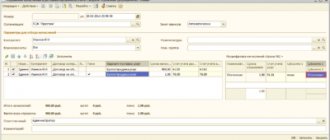Regulatory regulation of foreign exchange transactions
Carrying out currency transactions in the Russian Federation is regulated by Federal Law dated December 10, 2003 No. 173-FZ “On Currency Regulation and Currency Control”.
The concept of currency transactions is given in paragraph 9 of Article 1 of Law No. 173-FZ. Foreign exchange transactions include, for example, the use of foreign currency as a means of payment between counterparties. Currency values mean foreign currency and foreign securities (clause 5 of Article 1 of Law No. 173-FZ).
Currency transactions in accounting
Features of the formation in the accounting and financial statements of organizations of information on assets and liabilities, the value of which is expressed in foreign currency (including those payable in rubles), are established by PBU 3/2006 “Accounting for assets and liabilities, the value of which is expressed in foreign currency” ( approved by order of the Ministry of Finance of Russia dated November 27, 2006 No. 154n).
The value of assets and liabilities denominated in foreign currency is recalculated into rubles upon acceptance for accounting. If the amount of income or expenses is expressed in foreign currency, it must also be recalculated into rubles upon recognition (clauses 4, 9 of PBU 3/2006).
At the same time, the value of funds, liabilities and claims expressed in foreign currency, along with the ruble valuation, is additionally reflected by entries in foreign currency (clauses 7, 20 PBU 3/2006).
By obligations and requirements we mean:
- accounts receivable from buyers, suppliers, employees of the organization;
- accounts payable to suppliers, customers, employees;
- loans provided;
- loans received.
In general, the official exchange rate of the Central Bank of the Russian Federation (CBRF) is used. If the agreement establishes a rate different from the official one, then the rate agreed upon in the agreement is applied (clauses 5, 6, 9 PBU 3/2006).
To convert the amount of a foreign exchange transaction into rubles, the foreign exchange rate to the ruble is used, which was in effect:
- on the date of transfer (receipt) of funds - in terms of prepayment (advance payment, deposit);
- on the date of the currency transaction - in the part exceeding the amount of the prepayment (advance payment, deposit).
The date of a currency transaction is the day the organization has the right, in accordance with the legislation of the Russian Federation or an agreement, to accept for accounting the assets and liabilities that are the result of this transaction (clause 3 of PBU 3/2006). According to the Appendix to PBU 3/2006, such a day is the date:
- receipts (write-offs) of funds - for transactions on bank accounts;
- receipts to the cash register (issues from the cash register) of funds - for cash transactions;
- recognition of income (expense) - for income and expenses;
- recognition of costs that form the value of non-current assets - for investments in fixed assets (fixed assets) and intangible assets (intangible assets).
Amounts of funds, liabilities and claims expressed in foreign currency, after being accepted for accounting, are subsequently regularly revalued by converting into rubles at the rate of the Central Bank of the Russian Federation in force on the date of revaluation, or at the rate provided for in the agreement. Revaluation is carried out (clause 7 of PBU 3/2006):
- at each reporting date;
- on the date of the transaction;
- as the exchange rate changes - at will and only for cash.
Not subject to revaluation (clauses 4–10 PBU 3/2006):
- obligations and claims arising as a result of the transfer of advance payment (advance payment, deposit);
- the cost of investments in non-current assets (fixed assets, intangible assets, etc.), in inventories and other assets not related to cash and claims.
As a result of the revaluation of assets and liabilities denominated in foreign currencies, exchange differences arise. Exchange rate difference is the difference between the ruble valuation of an asset or liability, the value of which is expressed in foreign currency on the date of fulfillment of payment obligations or the reporting date of a given reporting period, and the ruble valuation of the same asset or liability on the date of its acceptance for accounting in the reporting period or reporting date of the previous reporting period (clause 3 of PBU 3/2006).
Exchange differences are included in other income (expenses) of the organization or in additional capital (clauses 11–14 of PBU 3/2006).
Currency transactions in tax accounting
For profit tax purposes, the specifics of accounting for income, expenses, claims and obligations, the value of which is expressed in foreign currency, as well as property in the form of currency values, are established by paragraph 8 of Article 271 of the Tax Code of the Russian Federation and paragraph 10 of Article 272 of the Tax Code of the Russian Federation.
When reflecting a currency transaction in tax accounting, its amount should be recalculated into rubles. Currency transactions in tax accounting mean the recognition of income and expenses expressed in foreign currency, as well as transactions with claims (liabilities), the value of which is expressed in foreign currency, and with property in the form of foreign currency values.
Income and expenses expressed in foreign currency are recalculated into rubles on the date of recognition of the corresponding income (expense).
Claims (liabilities), the value of which is expressed in foreign currency, and property in the form of currency values are initially recalculated on the date of transfer of ownership. To convert the amount of a foreign exchange transaction into rubles, the foreign exchange rate to the ruble is used, which was in effect:
- on the date of transfer (receipt) of funds - in terms of the advance (deposit);
- on the date of the currency transaction - in the part exceeding the amount of the advance (deposit).
In the future, claims (liabilities) in foreign currency and property in the form of foreign currency values should be regularly revalued:
- on the date of termination (fulfillment) of claims (obligations);
- date of transfer of ownership of currency assets;
- the last day of the current month.
In general, the official exchange rate of the Central Bank of the Russian Federation is used. If the contract establishes a rate different from the official one, then the rate agreed upon in the contract is used.
Requirements and obligations arising as a result of the transfer of an advance (deposit) are not revalued (clause 11 of article 250, clause 5 of clause 1 of article 265 of the Tax Code of the Russian Federation).
When revaluing currency values and claims in foreign currency or when devaluing liabilities in foreign currency, a positive exchange rate difference arises, which is included in non-operating income (clause 11 of Article 250 of the Tax Code of the Russian Federation).
Negative exchange rate differences arise when currency values and claims in foreign currency are devalued or when liabilities in foreign currency are revalued. Negative exchange rate differences are included in non-operating expenses (clause 5, clause 1, article 265 of the Tax Code of the Russian Federation).
As you can see, the rules for recording foreign exchange transactions in tax and accounting are generally similar.
At the same time, according to the Russian Ministry of Finance, exchange differences cannot be included in the tax base when calculating corporate income tax:
- related to expenses not accepted for profit tax purposes (letter dated May 27, 2011 No. 03-03-06/1/312);
- accrued for obligations and claims not related to the activities of the organization aimed at generating income, as not meeting the requirements of paragraph 1 of Article 252 of the Tax Code of the Russian Federation (letter dated January 18, 2019 No. 03-03-06/1/2333).
However, for profit tax purposes, exchange rate differences on certain income not included in the tax base are not taken into account. For example, exchange rate differences that arose during settlements with the founders for contributions to the authorized capital (clause 3, clause 1, article 251, clause 1, clause 1, article 277 of the Tax Code of the Russian Federation).
The procedure for calculating VAT when carrying out currency transactions has its own characteristics.
| 1C:ITS In the reference book “Accounting for Value Added Tax” in the section “Instructions for Accounting in 1C Programs”, see more details: about the sale of services under contracts in foreign currency; on export and import operations; on short-term loans in foreign currency, on the procedure for forming the tax base for VAT and calculating tax under contracts in monetary units. |
Formulas and examples for calculating interest under a loan agreement
There are two ways to determine interest on a loan agreement:
- use the service for calculating interest on a loan agreement online;
- make all the calculations yourself.
The first option looks a little more attractive, since you don’t need to do anything other than enter the initial data. Finding such a service will not be difficult - there are now a lot of loan calculators on the Internet.
The second method of calculation, although more complicated, is more reliable. In addition, you can take into account those factors that online services do not take into account. First, let's look at the method of calculating interest on a loan, provided that the rate is not indicated in the document.
As noted above, in such a case, interest is calculated at the refinancing rate.
To calculate percentages use the formula:
How to reflect currency transactions in 1C: Accounting 8
In the 1C:Accounting 8 program, currency transactions are supported by default - no additional functionality settings are required.
Currency accounting indicator in the Chart of Accounts
In the Chart of Accounts "1C:Accounting 8" edition 3.0 (section Main) for those accounts where currency accounting is supported (including accounting in conventional units, hereinafter - cu), in the Val column. the sign of currency accounting has been established (Fig. 1).
Rice. 1. Accounts with currency accounting feature
An entry for the debit or credit of an account with an established sign of currency accounting, along with the amount in rubles, will also contain a foreign currency amount. Accordingly, using any standard program report - account balance sheet or account analysis, which uses accounts with the currency accounting feature, you can analyze accounting data, both in ruble and currency equivalent.
Directory of currencies
The program supports multi-currency accounting and allows you to enter transactions and view reports in any currency presented in the Currencies directory. The directory can be accessed via the Currencies hyperlink from the Directories section.
Moreover, if no currency other than the Russian ruble is entered into the currency directory, then it is considered that the organization does not have foreign exchange transactions. Therefore, accounts with the currency accounting feature will not be available.
Working with the Currency directory involves two stages:
- filling out the directory;
- setting exchange rates.
There are two ways to fill out the Currency directory:
- using the All-Russian Currency Classifier OK (MK (ISO 4217) 003-97) 014-2000, approved. Resolution of the State Standard of Russia dated December 25, 2000 No. 405-st (hereinafter referred to as the Currency Classifier). The currency classifier, as well as other classifiers, are downloaded via a web service if there is an Internet connection and authorization on the 1C:ITS Portal;
- by manually creating a new currency.
The Create - By Classifier command allows you to add a new element of the Currency directory by selecting it from the Currency Classifier. In the Currencies directory element created in this way, the following details will be automatically filled in: Name of currency, Symbolic code, Numeric code. If the exchange rate of the selected currency can be downloaded via the 1C web service, the Loaded from the Internet flag will be set by default (Fig. 2).
Rice. 2. Currency card
The Create - New command allows you to add a new element of the Currency directory manually. As a rule, this method is used if the monetary obligation under an agreement with a counterparty, payable in rubles, is expressed in conventional units (cu). In this case, you must fill out all the details yourself.
It is not always necessary to create a Currency directory element with the selected currency in advance. When creating a new foreign currency account opened in a Russian bank, the currency will be determined by the account number and will be added to the Currency directory automatically.
As soon as at least one currency other than the Russian ruble appears in the currency directory, access to accounting accounts with the currency accounting feature opens.
There are three ways to set exchange rates:
- specify manually in the Exchange rates list;
- upload manually via 1C web service;
- automatically download through the 1C web service according to a specific schedule.
To automatically download currency rates according to a specific schedule, use the default routine task Loading currency rates. Users with administrator rights can independently configure routine tasks in the Routine and background tasks form (section Administration - Maintenance - Routine operations).
How to display exchange rates on the home page in “1C: Accounting 8” (rev. 3.0)
Contracts in foreign currency
If an organization keeps records with counterparties under agreements, then in the agreement card you can set up an agreement currency other than the Russian ruble. This can only be done if foreign currency is entered into the Currency directory.
In the form of the directory element Contracts, you should expand the Calculations collapsible group and select the contract currency in the Price in field (Fig. 3).
Rice. 3. Agreement card in foreign currency
When you select a currency other than the ruble, the Payment in switch will appear, with which you can set the currency in which payments are made under this agreement.
Payment can be set in rubles (if the agreement is concluded in conventional units) or in the currency of the agreement (if the agreement is foreign currency).
Bank accounts
To record funds in accounts opened in credit institutions (banks), accounting accounts are intended (Chart of accounts for accounting of financial and economic activities of organizations, approved by order of the Ministry of Finance of Russia dated October 31, 2000 No. 94n):
- 51 “Current accounts”;
- 52 “Currency accounts”;
- 55 “Special bank accounts.”
Analytical accounting is maintained for each bank account.
To store information about Russian and foreign bank accounts of all legal entities and individuals (both their own organizations and third-party counterparties), the program uses the Bank Accounts directory. The list of bank accounts of your own organization or counterparty is determined by those bank accounts that are subordinate to the directory element Organizations, Counterparties and Individuals. The transition to the list of bank accounts is carried out using the link Bank accounts from the organization’s card (from the card of the counterparty or individual).
For each organization (each counterparty), you can select a main bank account. This account will be inserted by default into payment documents.
A new bank account, including a foreign one, is created by clicking the Create button. In the bank account card that opens, you should fill in the basic details: the bank in which the account is opened; Account number; currency of funds, correspondent bank for indirect settlements, as well as other additional information.
It is recommended to start filling out a bank account with the Bank field, since the specified bank affects the display of details in the bank account card and the composition of the input checks. To select a bank, simply enter the BIC or the first letters of the bank's name. When entering a value, the bank is searched in the Banks directory and the values are substituted into the remaining fields. If there is no bank with such a BIC, you need to add a new bank to the directory.
To enter a new entry about a Russian bank into the Banks directory, it is recommended to use the Create - By classifier command.
The Classifier of Russian Banks is a separate directory of the program, which contains detailed information about all Russian banks and is kept up to date. You can update information about banks using the Load classifier command. Using the switch you can select the boot option:
- Download updates via the Internet;
- Download updates from a file.
In the Russian Bank Classifier selection form that opens, you should find the required bank (you can use the search), highlight it with the cursor and click the Select button (also by double-clicking the mouse). A new element is introduced into the Banks directory, where basic information about the bank is automatically filled in (name, BIC, correspondent account, bank contact information, etc.).
To enter a new entry about a foreign bank into the Banks directory, you should use the Create - New command, refusing the program’s offer to select a bank from the classifier.
If a Russian bank is selected, the program allows you to enter only a Russian account number, consisting of 20 digits. In this case, a check will be performed using the account check digit. If the verification fails, a message will appear: the account number or bank was entered incorrectly. An incorrect Russian account number cannot be saved in the program.
Selecting a foreign bank allows you to enter a bank account in the formats provided for foreign banks. For foreign banks, it is possible to enter an account in IBAN format (for banks with SWIFT and located in countries registered in the IBAN Registry) or in national format.
For Russian bank accounts, the currency of funds is filled in automatically based on the correct account number being entered. If the specified currency is not in the Currency directory, it is created automatically. For foreign bank accounts, you must specify the currency by selecting a value from the Currencies lookup.
How to create a bank account for an organization or counterparty in 1C:Accounting 8 (rev. 3.0), including in foreign currency
Conversion of currency amounts
If a currency transaction is registered in the program by a standard document of the accounting system (for example, Receipt (act, invoice) or Sales (act, invoice), etc.), then the currency amounts reflected in the accounts with the attribute of currency accounting (except for advances accounting accounts) are automatically are converted into rubles. In accordance with the rules of accounting and tax accounting, to convert the amount of a foreign exchange transaction into rubles, the rate specified in the Currency Directory is used, which was in effect:
- on the date of transfer (receipt) of funds - in terms of prepayment (advance payment, deposit);
- on the date of the currency transaction - in the part exceeding the amount of the prepayment (advance payment, deposit).
In some cases, on the date of the currency transaction, a manual revaluation of currency balances will be required. For example, when issuing and receiving loans in conventional units, the accounting of which is not automated in the program.
| 1C:ITS For more information on the reflection of issued and received short-term interest-bearing loans in conventional units, see the “Directory of Business Transactions. 1C: Accounting 8" section "Instructions for accounting in 1C programs": short-term interest-bearing loan in cu. (accounting with the borrower), short-term interest-bearing loan in monetary units. (accounting with the lender). |
The monthly revaluation of currency funds, claims and obligations expressed in foreign currency is performed automatically by the regulatory operation Revaluation of currency funds, which is included in the Month Closing processing (Operations section). Balances in foreign currency recorded in accounts with the sign of currency accounting (except for advances accounting accounts) are recalculated into rubles at the rate indicated at the end of the month in the Currency directory.
When conducting currency transactions and routine operations for the revaluation of foreign currency funds, account balances specified in the Accounts with a special revaluation procedure are not revalued. This register is accessed from the program's Chart of Accounts using the Accounts with a special revaluation procedure hyperlink.
The Accounts with a special procedure for revaluation register stores information about accounting accounts on which currency accounting is provided, but which for one reason or another should not be automatically revalued in the general manner, with exchange rate differences written off to accounts 91.01 “Other income” and 91.02 “ Other expenses". For most users, the Accounts information register with a special revaluation procedure does not need to be filled out, while the accounts accounting for advances received and issued expressed in foreign currency are not revalued in any case. This register should be filled out in special rare cases when non-standard program documents or atypical situations are used.
Calculation procedure
The loan agreement almost always specifies the amount of payment for the use of the funds provided. If nothing is said about this in the document, interest will be paid according to the current refinancing rate.
A loan agreement can be gratuitous only if this is clearly stated in the document. The question of how to correctly calculate interest under a loan agreement may arise if the borrower wants to make sure that all payment calculations are correct, or if the amount of the overpayment was not determined in advance.
In order to correctly calculate interest on a loan, you need to make sure that you have all the necessary documents on hand: the contract itself, an additional agreement, a payment schedule (if the loan was issued at a microfinance organization), receipts, bank statements, etc.
Independent calculation of interest is carried out on the basis of information contained in the documents, namely:
- the amount of funds provided;
- interest rate (daily, monthly or annual);
- term for provision of funds (calendar days for which interest is calculated);
- overpayment (if indicated);
- the number of days in the current year and specific month.
If the document provides for the accrual of interest for violation of deadlines, the calculation must be made based on this rate.
Conditions for obtaining a loan in foreign currency
Let's consider the main conditions that play an important role when obtaining a loan:
- First of all, any bank or microfinance organization looks at the client’s solvency.
- Analysis of credit history is considered to be one of the mandatory procedures when considering an application for a loan. It is worth noting that recently a clean credit history is not always a reason for issuing loans. At the same time, the presence of debt in other financial organizations is considered a plus when considering an application. Many credit institutions believe that it is easier to predict the behavior of a debtor than to predict the actions of clients who do not have experience in the field of lending.
- Some financial companies issue loan products in foreign currency only upon concluding an insurance contract. The insurance object in this case will be the life and health of the client, as well as work and solvency.
- The presence of collateral or a surety gives an advantage when approving a loan in foreign currency.
What does the interest rate depend on?
Activities to regulate interest in relation to credit programs are carried out by the Central Bank (CBR). Due to the increase in the number of debtors in the foreign currency loan industry, the Central Bank decided to increase the risk indicator to 300% for mortgage loans and car loans. Experts indicate that such a measure should help reduce the growth of debt in foreign currency.
An increase in the risk ratio will trigger an increase in the interest rate. Over time, this will completely eradicate lending in foreign currencies.
Important! It is impossible to predict the currency market. Systematic fluctuations of the ruble against the dollar and euro complicate further loan repayment.
In the future, the fall of the ruble will lead to an increase in payments by borrowers on loans in foreign currency. The total amount of debt obligations will increase more and more.
Reasons for writing off debts
Let's consider the main reasons why credit institutions can write off borrowers' loans issued in foreign currency:
- The costs of a bank or microfinance organization for collection work become higher than the amount of the client’s debt itself.
- Death of the borrower.
- Expiration of the statute of limitations, which is 3 years.
- The borrower does not have any property that can be seized to pay off the debt.
- The client's collateral cannot cover the total amount of debt.
In conditions of economic instability, loans in foreign currency are considered problematic for both parties to the agreement. These types of loan products can be beneficial in cases where the client receives wages in foreign currency. However, if the client’s main source of income comes in rubles, it is advisable to choose a different type of loan.






